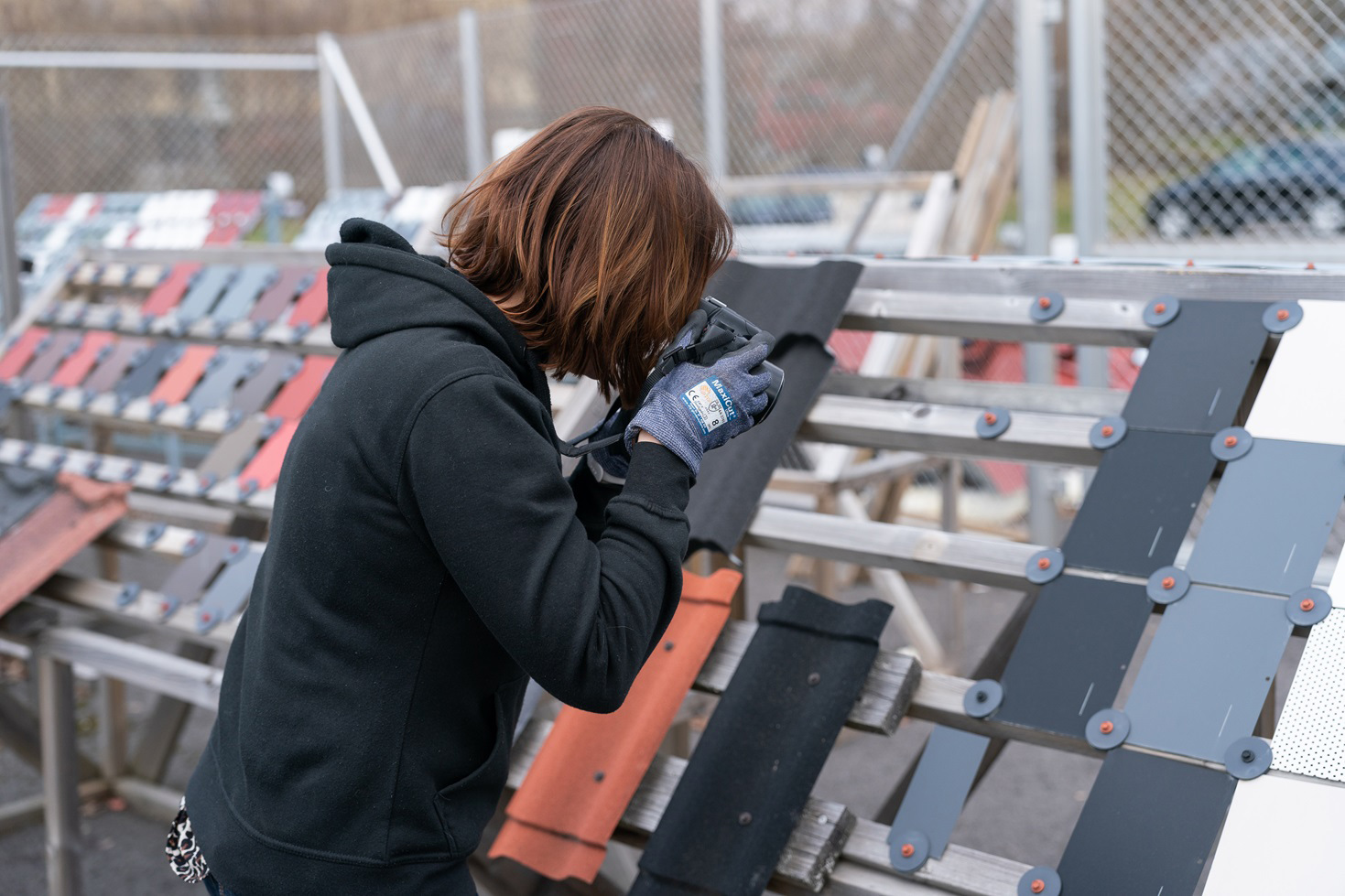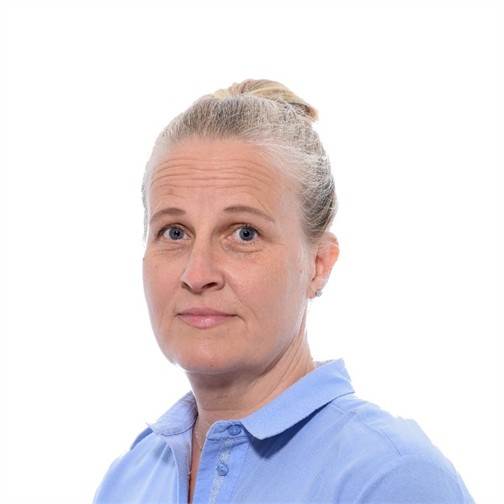
Long-term durability research on materials
What we offer
HAMK’s test equipment can be used to study the durability of materials under different accelerated conditions.
Materials can be affected by factors such as corrosion, sunlight, humidity, temperature fluctuations, air pollution, chemical stress and mechanical stress. Changes in materials can be monitored by, for example, visual and microscopic examination, strength testing and other mechanical tests, and colour and gloss measurements. Environmental stress can also be tested under real outdoor conditions on HAMK’s own outdoor test fields.
Services for companies
Coatings and other materials are exposed to various environmental factors such as water, moisture, salt, UV radiation, heat and cold. At HAMK Tech, the effect of these factors can be tested in accelerated experiments. We are constantly developing our testing methods and equipment and are actively involved in, for example, research on the long-term durability of sheet metal.
Examples of our services:
- Corrosion research (e.g. salt spray testing)
- Environmental stress (effects of temperature, humidity and UV radiation)
- Outdoor testing (weather and climatic stress, outdoor soiling)
- Colour and gloss measurements during environmental tests
- Adhesion testing of coatings
Our testing services also include comprehensive result analysis and reporting.
Services
Corrosion testing
Salt spray tests are used to determine the corrosion resistance and corrosion susceptibility of materials. Our services include the determination of corrosion resistance of materials and products in corrosion tests such as neutral salt spray test, prohesion and VDA tests according to standards such as SFS-EN ISO 9227, SFS-EN ISO 11997-1, ASTM B117, ASTM G 85 A5 and SFS-EN ISO 12944-6. In addition to continuous neutral salt spray testing, we perform a variety of cyclic tests, including temperature variations and humidity control. We have three 1100-litre corrosion chambers at our disposal, so that even larger sample pieces can be tested.
Corrosion tests can be used to investigate the corrosion resistance of different materials, material combinations, structures, equipment and components. The tests are used for uncoated metals as well as for painted and coated parts, for example in the paint, automotive or aerospace industries, defence applications and electrical and electronic components.
Corrosion test equipment:
- Q-Fog CCT 1100
- Q-Fog CRH 1100
- Ascott CC 1300
For example, tests according to the following standards are available:
- SFS-EN ISO 9227 Corrosion tests in artificial gas environments. Salt spray tests
- ASTM B117 Standard Practice for Operating Salt Spray (Fog) Apparatus
- SFS-EN 13523-8 Coil coated metals. Test methods. Part 8: Resistance to salt spray (fog)
- IEC 60068-2-11 Basic environmental testing procedures. Part 2: Tests. Test Ka: Salt mist (IEC 68-2-11)
- SFS-EN 60068-2-11 Environmental testing. Part 2: Tests. Test Ka: Salt mist.
- MIL-STD-1312-1 Military standard. Fastener test methods. Salt spray.
- ASTM G 85 Standard Practice for Modified Salt Spray (Fog) Testing. Annex A5. Dilute electrolytic fog/dry test.
- AECTP-300 Climatic environmental tests. Method 309. Salt fog.
- MIL-STD-810G Department of defense test method standard. Method 509.5 Salt fog.
- VDA 621-415 Anticorrosive check of vehicle coating with circular changing stress.
- SFS-EN ISO 11997-1 Paints and varnishes – Determination of resistance to cyclic corrosion conditions, Part 1: Wet (salt fog)/dry/humidity
- IEC 60068-2-52 Environmental Testing – Part 2: Tests – Test Kb: Salt Mist, Cyclic (Sodium Chloride Solution)
- SFS-EN ISO 11997-2 Paints and varnishes. Determination of resistance to cyclic corrosion conditions. Part 2: Wet (salt fog)/dry/humidity/UV light.
- ASTM D5894-96 Standard practice for cyclic salt fog/UV exposure of painted metal (Alternating exposure in a fog/dry cabinet and UV/condensation cabinet.
- SFS-EN ISO 12944-6 Paints and varnishes – Corrosion protection of steel structures by protective paint systems – Part 6: Laboratory performance test methods
- SFS-EN ISO 12944-9 Paints and varnishes – Corrosion protection of steel structures by protective paint systems – Part 9: Protective paint systems and laboratory performance test methods for offshore and related structures
Tests to a wide range of other standards are also possible.
Keywords
corrosion, corrosion resistance, corrosion test, corrosion research, corrosion testing
UV testing
UV cabinets can be used to simulate the effects of sunlight and humidity on materials. In a UV test, materials are exposed to varying cycles of UV radiation and humidity at carefully controlled elevated temperatures. The effects of sunlight are simulated using special UV fluorescent lamps. Dew and rain are simulated by condensing humidity and/or water spray.
In a QUV machine, the effect of sunlight is produced by fluorescent UV lamps. UV lamps are usually divided into UV-A and UV-B lamps depending on the wavelength of the radiation they emit. Although UV light covers only about 5% of sunlight, it causes most of the photochemical degradation of organic materials (such as paints, varnishes, plastics and rubbers). UVA lamps have a wavelength range of about 295-365 nm and correlate well with solar UV radiation. UVB lamps emit shorter wavelengths and are therefore more efficient, but do not fully correlate with the spectrum of sunlight. UV tests accelerate the damage caused by sunlight, rain and dew, so that even short test runs can produce damage equivalent to months or years of outdoor use. We use UV-A and UV-B lamps as well as a variety of light filters.
UV tests can be used on all materials affected by the sun’s UV light, such as metal and wood coatings and paints, plastics, rubbers and fabrics. Defects that can be detected in the tested items include discolouration, fading, chalking, chipping, cracking, clouding, blistering, loss of gloss, loss of strength and brittleness.
UV testing equipment:
- QUV UV test cabinet, QUV/spray model
- QUV UV test cabinet, QUV model
For example, tests according to the following standards are available:
- SFS-EN ISO 11997-2 Paints and varnishes. Determination of resistance to cyclic corrosion conditions. Part 2: Wet (salt fog)/dry/humidity/UV light
- SFS-EN ISO 4892-3 Plastics. Methods of exposure to laboratory light sources. Part 3: Fluorescent UV lamps.
- SFS-EN ISO 11507 Paints and varnishes. Exposure of coatings to artificial weathering. Exposure to fluorescent UV and water.
- SFS-EN 13523-10 Coil coated metals. Test methods. Part 10: Resistance to fluorescent UV light and water condensation.
- SFS-EN 927-6 Paints and varnishes. Coating materials and coating systems for exterior wood. Part 6: Exposure of wood coatings to artificial weathering using fluorescent UV lamps and water.
- SFS-EN ISO 16474-3 Paints and varnishes. Methods of exposure to laboratory light sources. Part 3: Fluorescent UV lamps
Tests to a wide range of other standards are also possible.
Keywords
weathering, weather resistance, colour fastness, light fastness
Xenon testing
Xenon cabinets can be used to simulate the effects of sunlight and moisture on materials. In a xenon test, materials are exposed to varying cycles of radiation and humidity under carefully controlled conditions. Xenon light simulates the full spectrum of sunlight, not just UV light as in UV tests.
Xenon tests accelerate the damage caused by sunlight, rain and dew, so that even short test runs can produce damage equivalent to months or years of outdoor use. We have the Q-SUN Xe-3-HBSE for testing all materials, as well as a smaller device with light only, which mainly tests fabrics.
Xenon tests can be made for all materials affected by sunlight, including metal and wood coatings and paints, plastics, rubbers and fabrics.
Our Xenon test equipment:
- Q-SUN Xe-3-HBSE: full spectrum sunlight with humidity control, water spray (front and rear) and dual touch screens
- Suntest CPS+, Heraeus Instruments
For example, tests according to the following standards are available:
- SFS-EN ISO 16474-2 Paints and varnishes – Methods of exposure to laboratory light sources
- SFS-EN ISO 105-B02 Textiles. Tests for colour fastness. Part B02: Colour fastness to artificial light: Xenon arc fading lamp test.
- SFS-EN ISO 4892-2 Plastics. Methods of exposure to laboratory light sources. Part 2: Xenon-arc lamps
Key words
xenon, light fastness, colour fastness, fading, weather resistance
Condensation/moisture resistance testing
The condensation testing device simulates the damaging effects of outdoor humidity by condensing warm water directly onto the surface of test samples. The device accelerates the exposure compared to natural conditions with a higher humidity temperature. Condensation testing is typically used on a variety of coatings, for example to determine the blistering tendency of paints and the bubbling and moisture resistance of wood coatings.
Outdoors, materials are regularly exposed to moisture. Most moisture is caused by condensed humidity and not by rain. The simulation is achieved by a condensation cycle, where water is evaporated from a tank at the bottom of the unit. The steam keeps the relative humidity in the chamber close to one hundred percent. The back side of the samples is in contact with the cooler room air and the water vapour in the chamber condenses into droplets on the samples. The droplets are condensation water, which is very pure, basically distilled water. This improves the test’s reproducibility and prevents the samples from becoming contaminated.
Our condensation test equipment:
- QCT Condensation tester
- QC Condensation Tester
For example, tests according to the following standards are available:
- SFS-EN ISO 6270-1 Paints and varnishes. Determination of resistance to humidity. Part 1: Condensation (single-sided exposure)
Key words
bubbling, blistering, moisture resistance, condensation
Outdoor testing
The durability of materials in real outdoor conditions is best determined there where they will actually be used. In practice, this testing is carried out on outdoor testing grounds around the world. In addition to HAMK’s own fields, we can deliver samples to commercial outdoor test fields abroad or help with the analysis of samples tested on these fields. The different test fields test different things, for example corrosion resistance in harsh coastal conditions and sunlight resistance in southern regions. Any materials and products can be put for outdoor testing, basically without size restrictions.
Outdoor test fields are also used to study fouling, for example due to air pollution or algae growth.
We have the tools to prepare samples according to SFS-EN 13523-19, so we can also provide just the sample preparation.
HAMK’s own outdoor test fields:
Hämeenlinna, test field inland, mild corrosion exposure, low solar radiation, so-called Finnish basic conditions
Mustiala, biological growth field, in the middle of a Finnish forest.
For example, tests according to the following standards are available:
- SFS-EN ISO 2810 Paints and varnishes. Natural weathering of coatings. Exposure and assessment
- SFS-EN 13523-19 Coil coated metals. Test methods. Part 19: Panel design and method of atmospheric exposure testing.
- SFS-EN ISO 11474 Corrosion of metals and alloys – Corrosion tests in artificial atmosphere – Accelerated outdoor test by intermittent spraying of a salt solution (Scab test).
Weather conditions testing (weather chamber)
Equipment and components are used and stored in different locations and their materials and structures are exposed to different temperatures and conditions. The weather chamber tests are used to assess the problems that temperature and humidity variations can cause to equipment or parts throughout its life cycle, from design, manufacturing and transport to use.
The effect of temperature and humidity differences in weather conditions can be studied in a weather chamber with a temperature range of -75°C to +180°C and a relative humidity range of 10-98% RH and can also be programmed to follow different cyclical variations in humidity. The chamber has a volume of 680 litres and the maximum test piece size is approximately 760 x 810 x 990 mm.
The chamber can be used to examine any materials and products under different temperatures and humidity conditions. For example, it can be used for various storage tests, operating temperature tests and to simulate stress during transport. The chamber has been used to test a wide range of equipment for use in harsh conditions (high humidity in the air, e.g. in mines or rainforests) to ensure reliable operation. The chamber is equipped with an inlet for electrical wiring, so it is also possible to test equipment that are switched on.
In addition to the weather chamber, high-temperature experiments can be carried out in a heating cabinet and cold experiments in a blast freezer. With a capacity of 585 litres, the blast freezer is capable of rapidly cooling large masses.
Weather chambers can be used to test, among other things:
- heat resistance
- resistance to cold
- resistance to high relative humidity
- low relative humidity resistance
- storability
- durability and service life
- Obsolescence
Equipment:
- Espec ARS-0680, Thermal refrigeration and humidity chamber, temperature and humidity control (-75 – +180 C, 10-98 %rh), cabinet size 680 L, 850 x 1000 x 800 mm.
- Quick freezer
- Thermal cabinets Termaks 2 pcs
Several standard tests can be carried out on weatherproof enclosures, such as these listed below.
- IEC60068 2-1: Cold
- IEC60068 2-2: Dry heat
- IEC60068 2-3: Damp heat, steady state
- IEC60068 2-14 Nb: Change of temperature with specified rate of change
- IEC60068 2-30: Damp heat, cyclic (12+12h cycle)
- IEC60068 2-38: Composite temperature/ humidity cyclic test
- IEC60068 2-78: Damp heat, steady state
- ISO16750-4 5.3: Temperature cycling
- SFS-EN 13523-27 ”Coil coated metals. Test methods. Part 27: Resistance to humid poultice (Cataplasm test)
Colour and gloss measurement
Colour and gloss meters are widely used in quality control to monitor colour and gloss. They can also be used to monitor changes in colour and gloss of materials as they age. These changes are measured in accelerated condition tests and outdoor tests. Visual inspection is important in determining both colour and gloss, but the meters provide a numerical value that is not dependent on the observer.
The colour and gloss meter can measure a wide range of materials and products: metals, plastics, fabrics, wood, paint, pigments – only your imagination is the limit. The most reliable result is obtained from a surface that is straight at the point of measurement, but because the measuring area is small it allows the measurement of products of different shapes.
Spectrophotometer Datacolor 600 TM
- measures the colour of the product
- suitable for almost all materials and products
- measuring geometry Diffuse/8° (D/8)
- Selectable colour scale, light source and angle of observation
- measurement without and with gloss component possible (SPIN/SPEX)
- available measuring apertures 6,6 mm, 9 mm and 30 mm
Erichsen Spectromaster 565
- measures the colour of the product
- suitable for almost all materials and products
- Measurement geometry Diffuse/8° (D/8)
- Selectable colour scale, light source and angle of observation
- also measures product gloss, measuring geometry 60°
- portable, so measurements can be taken anywhere
Glossmeter micro-TRI-gloss
- measures the gloss of a product
- suitable for almost all materials and products
- measuring geometries 20°, 60° and 85°
- portable, so measurements can be taken anywhere
Measuring the colour and gloss of surfaces:
- Datacolor 600 TM spectrophotometer
- Erichsen Spectromaster 565
- Micro TRI Gloss gloss meter
For example, tests according to the following standards are available:
- SFS-EN ISO 2813 Paints and varnishes. Determination of gloss value at 20°, 60° and 85°
- SFS-EN ISO/CIE 11664-4 Colorimetry. Part 4: CIE 1976 L*a*b* colour space
Mechanical tests for coatings
We test and study the properties of painted products, such as adhesion, bending resistance, impact resistance and scratch resistance. Damage and changes that occur during the environmental tests can be verified after the test by these mechanical tests.
Coating thickness measurements
The Phascope PMP10 Duplex measures coating thickness using the phase-sensitive eddy current method (ISO 21968) and the magnetic induction method (ISO 2178). The measuring system automatically detects the substrate material and selects the appropriate method accordingly. The instrument can measure the coating thicknesses of the paint layer and the zinc coating (or other non-magnetic metallic material) in one measurement. The meter can also be used to measure the paint layer on aluminium or other (non-magnetic) metallic surfaces. If required, we can also use a Paint inspection gauge device to measure the coating thickness.
Scratch resistance/film hardness (ISO 15184 and EN 13523-4)
Scratch test with a hand-held Erichsen Hardness Test Pencil (model 318 S). The maximum force achievable with the instrument is 20N.
Adhesion tests
The hilar grid test (SFS-EN ISO 2409, ASTM D 3359-02) can be used for film thicknesses up to 250 µm, the X-slice test (SFS-EN ISO 16276-2) also for thicker paint films. The scratch test can be used to test coatings on both metal and wood substrates. The method involves slicing through the coating in two different directions to form a grid pattern. An adhesive tape is then pressed onto the surface of the lattice, and some of the coating is removed if adhesion is impaired. In the X-slice test, cross-sections in the shape of the letter X are made and adhesion is determined using the adhesive tape.
Tensile test SFS-EN ISO 4624
The test consists of gluing a tensile sample to the coated plate and pulling them apart using a suitable tensile strength measuring device. The test result is the tensile stress required to fracture the weakest interface (adhesion fracture) or the weakest component (intramaterial fracture) in the test piece.
Flexural strength (SFS-EN ISO 6860)
The test is used to investigate the cracking or delamination of paint or varnish films from the metal substrate when the substrate is bent around a conical mandrel.
Impact resistance (ISO 6272-2, EN 13523-5, ASTM-D-2794)
A hemispherical drop weight is used to determine the impact energy that the coating can withstand without breaking.
Abrasion resistance (Taber)
The Taber abrasion tester can be used to study the abrasion resistance of different materials, and thus simulate, for example, the wear caused by wiping different surfaces. Each material has its own standards, which refer to the Taber method. For example, the instrument can be used to test painted sheet metal and anodised aluminium, but the range of materials tested is very wide. Different types of wear rollers are available for the instrument, depending on the material to be tested. Rollers rotating in different directions will wear the surface of the sample. Additional weights and rotational speed can be used to influence the wear rate of the test. The sample size used on the instrument is well defined and the surface should be flat and flattened. Wear resistance can be determined, for example, by weight loss measurements or visual assessment, depending on the standard and material.
Equipment:
- Taber Rotary Abraser 5135
For example, tests according to the following standards are available:
- SFS-EN ISO 7784-2 Paints and varnishes. Determination of resistance to abrasion. Part 2: Method with abrasive rubber wheels and rotating test specimen
- SFS-EN 13523-16 Coil coated metals. Test methods. Part 16: Resistance to abrasion
- ASTM D4060 Standard Test Method for Abrasion Resistance of Organic Coatings by the Taber Abraser
- ISO 10074 Anodizing of aluminium and its alloys — Specification for hard anodic oxidation coatings on aluminium and its alloys
Fourier Transform Infrared Spectrophotometer (FTIR)
Fourier transform infrared spectroscopy (FTIR) is a type of vibrational spectroscopy that can be used to identify chemical compounds. FTIR microscopy can also be used to image two-dimensional regions and determine the position or distribution of different substances in a sample.
FTIR can be used to study different materials and identify mainly organic substances such as plastics or biomass. FTIR is based on the reflection or absorption of infrared radiation from a sample. The device is simple to use and a single measurement takes only seconds. The sample can be solid, liquid or gas, and a very small piece of sample is sufficient. Each compound has its own spectrum, which is like a fingerprint of the compound. The instrument stores ready-made libraries of spectra of known compounds, against which the spectra of a sample can be compared, thus identifying the compounds and chemical bonds present in the sample.
Equipment:
- SHIMADZU IRSpirit
Hyperspectral imaging
Hyperspectral imaging studies how and how strongly an object reflects light, both in the visible light wavelength range and in the infrared range, which is invisible to the human eye. A hyperspectral camera takes a photograph of the object under study and measures the reflectance spectrum of the object in the 400-1000 nm wavelength range at each pixel of the image.
Hyperspectral imaging can be used for example:
- to measure a huge amount of reflectivity data, which can be further used for machine learning, for example
- to distinguish between mixed materials
- detect and analyze subtle anomalies on the surfaces of materials
- quality control, environmental and plant monitoring, material sorting
Hyperspectral images can be taken outdoors in sufficient sunlight or in the laboratory by illuminating the subject with hyperspectral imaging lamps. The object to be imaged can be almost any size, although very small objects (less than 1 cm) can pose challenges with focusing.
Equipment:
- Specim IQ
Contact us
.
Contact form


